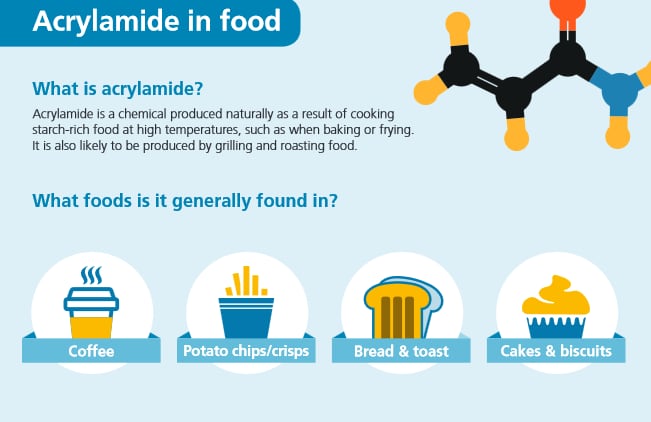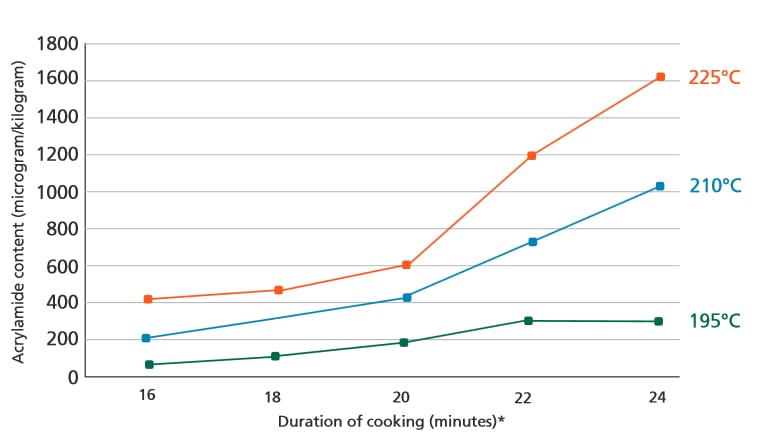Acrylamide occurs in foods cooked at very high temperatures, which causes them to brown. Coffee, fried potato products – such as chips and crisps – biscuits, crackers and bread are all dietary sources of acrylamide, according to the European Food Safety Authority.
Consumers are becoming increasingly aware of some of the microbiological risks associated with food, Poppy said.
He added: “Acrylamide is a chemical substance formed by a reaction between amino acids and sugars, typically in foods with a high-starch content, when cooked at high temperatures such as in frying, roasting and baking.”
Acrylamide in food
The formation of acrylamide in food occurs as a result of the Maillard reaction, which also happens during the burning of tobacco, he added.

The naturally present water, sugar and amino acids in food combine to create colours, aromas and flavours in food, Poppy said. This also causes the browning of food, which results in the formation of acrylamide.
As a result, cooking for long amounts of time and at high temperatures increases the amount of acrylamide in foods.
Biological effects of acrylamide exposure include cancer and damage to the nervous and reproductive systems, according to scientific reports.
While most of the evidence is based on the effects seen in animal or cell studies, exposure to high levels of acrylamide has been known to cause neurotoxicity in humans.
EFSA scientists had recently concluded that acrylamide in food potentially increases the risk of cancer for consumers of all ages.
No regulation
There is currently no regulation to limit the amount of the toxin in foods, however, the European Commission recently introduced ‘indicative values’ to help the food industry reduce levels in 'high-risk' foods.

For example, advice has been issued on cooking chips, which suggests they are prepared to a light golden colour. Bread should also be toasted to the lightest colour acceptable.
The European potato industry developed information to help the hospitality sector prepare chips in a healthy way with respect to acrylamide formation at goodfries.eu.
As for the future of acrylamide guidance and regulations, Poppy added: “We will renew our UK acrylamide strategy and review the outcomes of our research to inform EU discussions and advice to consumers and industry.”
